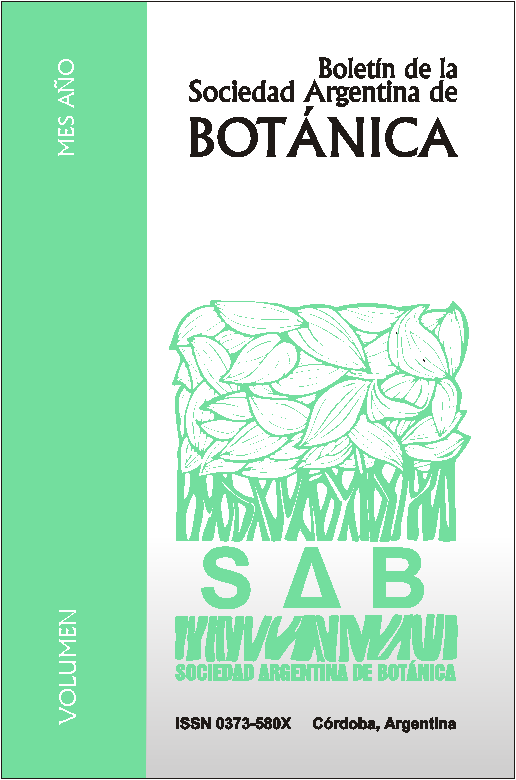Floral and palinological characters in Acanthostyles (Asteraceae, Eupatorieae) and its relationship to pollination.
DOI:
https://doi.org/10.31055/1851.2372.v52.n1.16913Keywords:
Acanthostyles, anemophily, Austroeupatorium, Eupatorieae, South America.Abstract
Floral and palinological characters in Acanthostyles (Asteraceae, Eupatorieae) and its relationship to pollination. Wind pollination in Asteraceae is well documented only in few tribes.
Particularly, in Eupatorieae, apparent anemophily has only been reported in 10 species belonging to the genera Critonia, Decachaeta, Eupatorium, Koanophyllon, and Neohintonia, most of which inhabit North and Central America, with only two species from South America. The genus Acanthostyles has only one species, Acanthostyles buniifolius, which is widely distributed in southern South America. This species shows features that may suggest a pollination mechanism mediated by wind. We analyzed in detail some
morphological and palynological traits related to the anemophilous syndrome. As a result, we identified some characters of A. buniifolius associated to wind pollination: presence of loose and pendulous secondary inflorescence with mainly downward oriented small heads, increased of proportion of stigmatic
area in relation to the total length of the style branch, acicular style sweeping laxly arranged and widecaveate, microechinate (= subechinate) pollen. This paper proposes first evidence of possible anemophily for a species of subtribe Dysinaphiinae within the Eupatorieae tribe.
Downloads
Downloads
Published
How to Cite
Issue
Section
License
Provides immediate and free OPEN ACCESS to its content under the principle of making research freely available to the public, which fosters a greater exchange of global knowledge, allowing authors to maintain their copyright without restrictions.
Material published in Bol. Soc. Argent. Bot. is distributed under a Creative Commons Attribution-NonCommercial-ShareAlike 4.0 International license.









